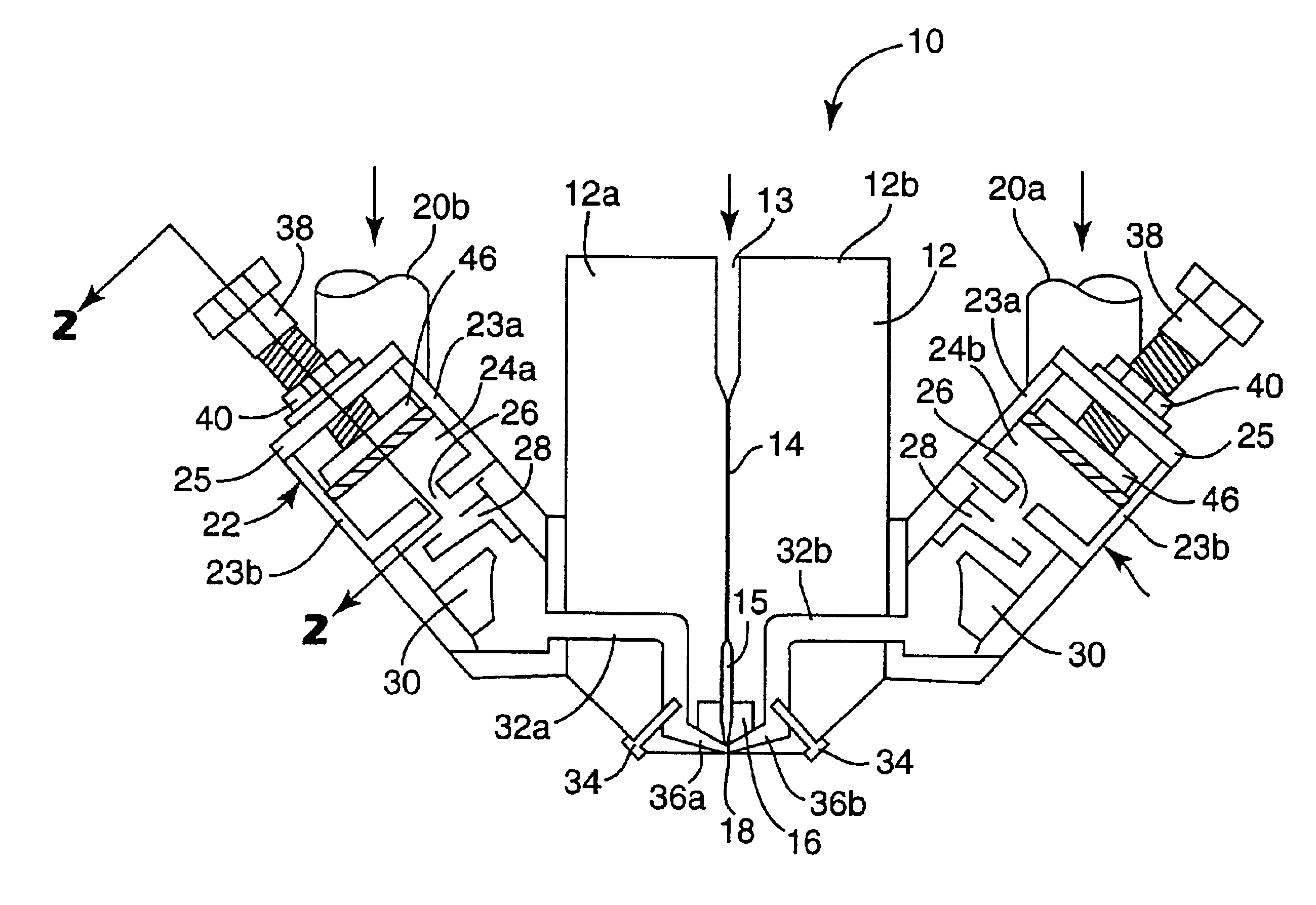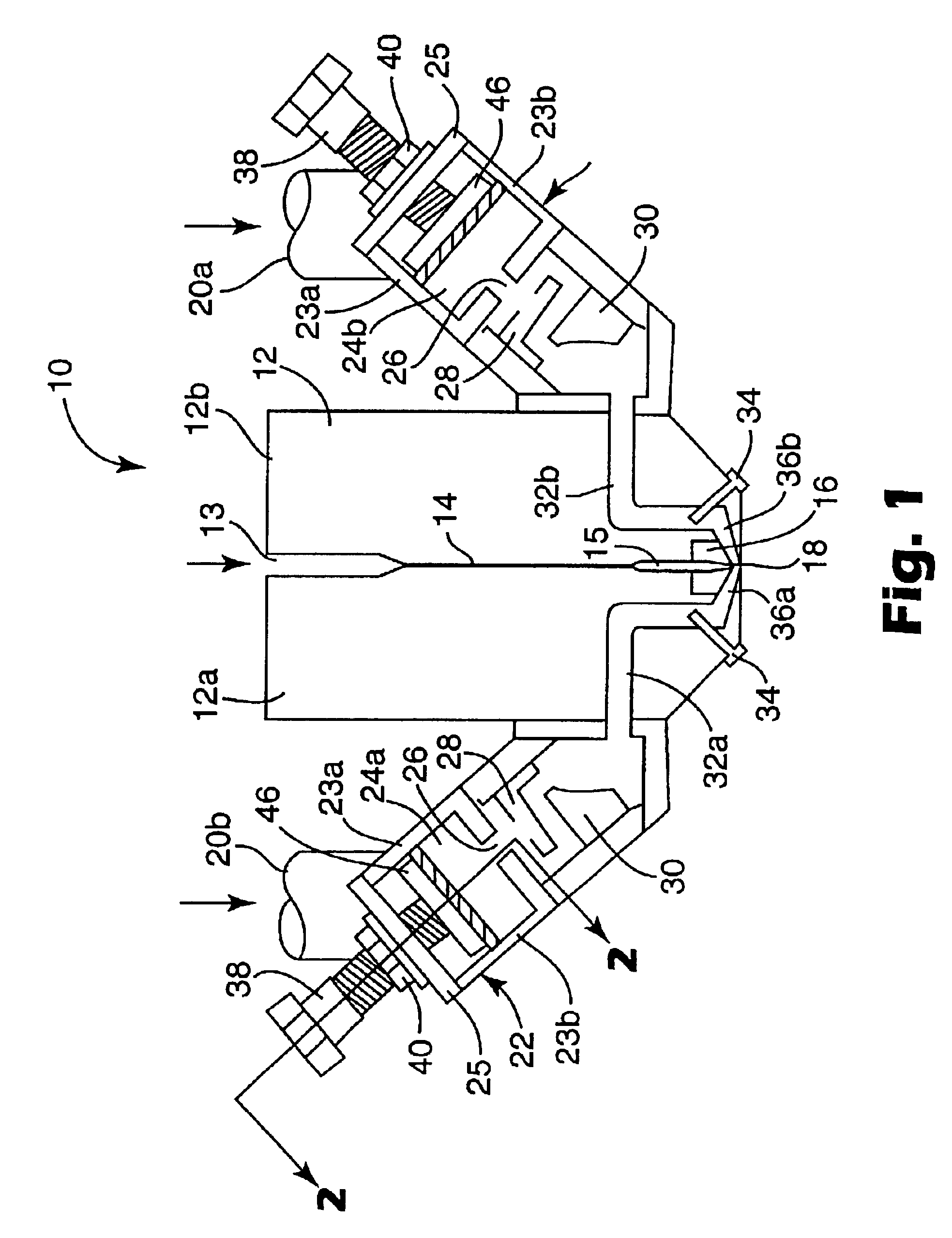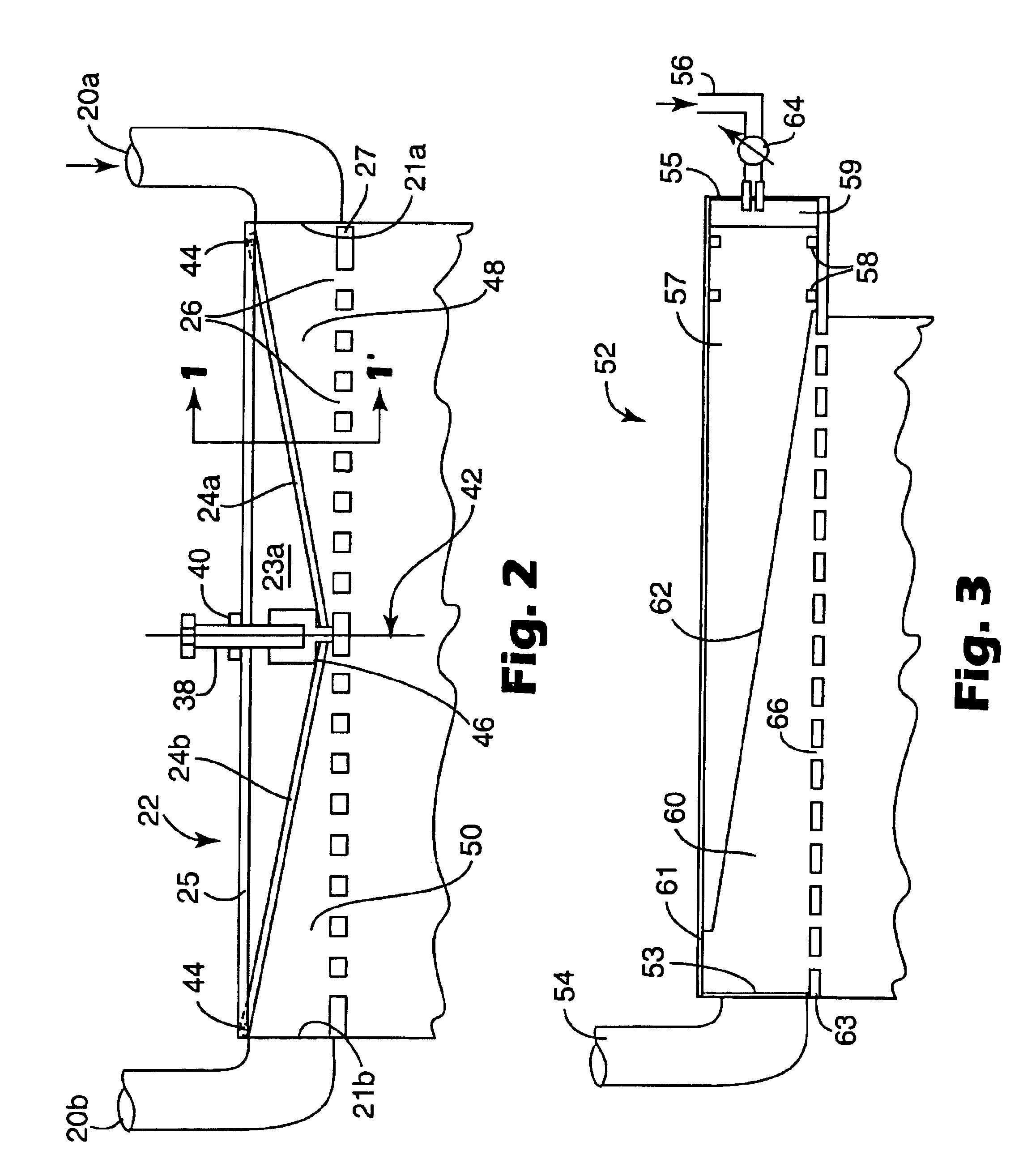Attenuating fluid manifold for meltblowing die
a technology of attenuating fluid and melt blowing die, which is applied in the field of attenuating fluid manifold for melt blowing die, can solve the problems that the porousness may not always provide a sufficient basis for evaluating the quality or uniformity of nonwoven web, and the web may still exhibit non-uniform performance characteristics, so as to achieve uniform physical properties and high quality.
- Summary
- Abstract
- Description
- Claims
- Application Information
AI Technical Summary
Benefits of technology
Problems solved by technology
Method used
Image
Examples
Embodiment Construction
As used in this specification, the phrase “nonwoven web” refers to a fibrous web characterized by entanglement, and preferably having sufficient coherency and strength to be self-supporting.
The term “meltblowing” means a method for forming a nonwoven web by extruding a fiber-forming material through a plurality of orifices to form filaments while contacting the filaments with air or other fluid to attenuate the filaments into fibers and thereafter collecting a layer of the attenuated fibers.
The phrase “meltblowing temperatures” refers to the meltblowing die temperatures at which meltblowing typically is performed. Depending on the application, meltblowing temperatures can be as high as 315° C., 325° C. or even 340° C. or more.
The phrase “meltblowing die” refers to a die for use in meltblowing.
The term “passage” refers to an enclosed space in a meltblowing die or attenuating fluid manifold through which attenuating fluid flow can occur.
The phrase “distribution passage” refers to a pa...
PUM
| Property | Measurement | Unit |
|---|---|---|
| Temperature | aaaaa | aaaaa |
| Length | aaaaa | aaaaa |
| Temperature | aaaaa | aaaaa |
Abstract
Description
Claims
Application Information
 Login to View More
Login to View More - R&D
- Intellectual Property
- Life Sciences
- Materials
- Tech Scout
- Unparalleled Data Quality
- Higher Quality Content
- 60% Fewer Hallucinations
Browse by: Latest US Patents, China's latest patents, Technical Efficacy Thesaurus, Application Domain, Technology Topic, Popular Technical Reports.
© 2025 PatSnap. All rights reserved.Legal|Privacy policy|Modern Slavery Act Transparency Statement|Sitemap|About US| Contact US: help@patsnap.com



